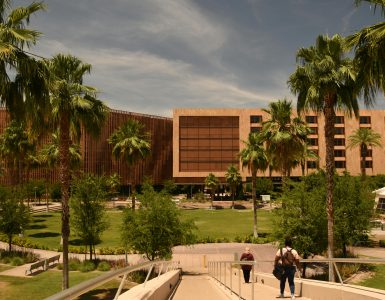Paragon Space Development Corporation is now under contract with NASA for the development and testing of technology that would save fuel and money.
“[NASA] was looking for technology that will really make a big difference,” Paragon President and CEO Grant Anderson said. “In the ecosystem of… [where] humanity goes anywhere off the planet, life support is kind of the forgotten technology…If Paragon has a lock on the technologies for doing this, we become a key player no matter wherever humanity goes in space.”
The contract will help Paragon develop and test their patent-pending in situ resource utilization (ISRU)-derived water purification and Hydrogen Oxygen Production (IHOP) subsystem through NASA’s NextSTEP BAA Program —a public-private partnership model that develops exploration capabilities to support more extensive human spaceflight missions.
Paragon partners with Giner Inc., a Boston-based research and development firm that develops and commercializes electrochemical technologies, to purify naturally occurring deposits of water and generate oxygen and hydrogen at commercially competitive scales.
According to Anderson, IHOP takes dirty water and runs it through a membrane filter that purifies it. Then Giner takes the cleaner water and puts it in an electrolyzer that produces hydrogen and oxygen.
“Giner is proud to be a part of this project utilizing our patented lightweight electrolyzer technology which is the direct product of over 30 years of PEM electrolyzer development with NASA for life support, energy storage and ISRU,” Dr. Corky Mittelsteadt, CEO of Giner, said in a statement.
The practice of ISRU is expected to increase safety and affordability of future human spaceflight missions by limiting the need to launch supplies such as oxygen, water, and propellant from Earth while allowing extended stays on the lunar surface.
According to Paragon, once IHOP is delivered to the moon it will provide the water and oxygen needed for a continuous human presence on the moon and the low-cost propellant needed to explore the solar system.
“Everything is about getting things off of the planet and the smaller the rocket, the cheaper it is,” Anderson said. “If we can save thousands of pounds on a spacecraft that has to launch to the moon because they know they can refuel at the moon as opposed to having to take all the fuel with them, you end up with a really good commercial case for providing that.”
But ISRU is not the only technology Paragon is working on with NASA.
The company announced it won a NASA Small Business Innovation Research Phase II Award for its Condensate Separator for Microgravity Conditions (COSMIC) technology — which separates liquid condensate from air with low power draw and low-pressure drop in the flow path while supplying the separated condensate pressure to the Water Processing Assembly onboard the International Space Station.
NASA had been looking for technology that would facilitate low mass and highly reliable thermal control systems for exploration vehicles and COSMIC fills this gap by providing enhanced reliability and allows for integration into the ISS and lunar vehicle architectures without significant alteration of the systems by removing condensation directly from the primary airflow path provides enhanced reliability.
“Paragon knows that no matter where humans go, you’re going to have a life support. One of the goals of Paragon is that when you or your children go up into space, you’ll look up and see a plaque on the wall of the bulkhead of your spacecraft saying ‘your life support by Paragon’ and you’ll know you’re in the best hands you can be in. The Paragon brand is one of excellence and very, very good technology,” Anderson said.
















Awesome news and very exciting! Keep doing all the amazingly great things Paragon does!!